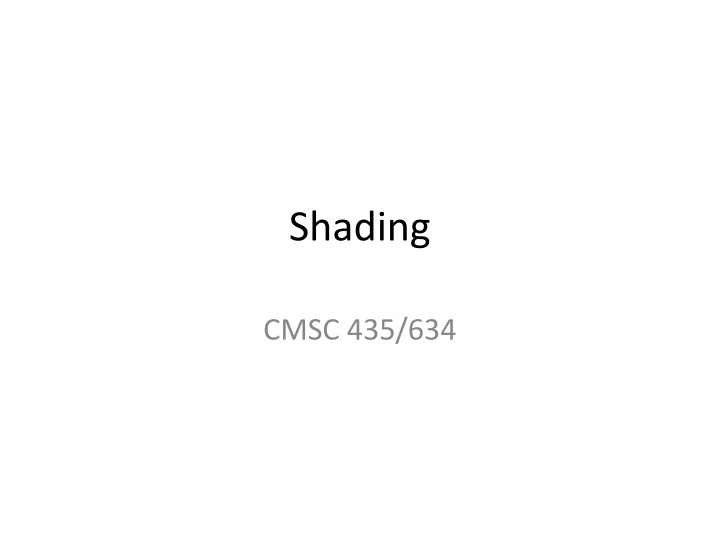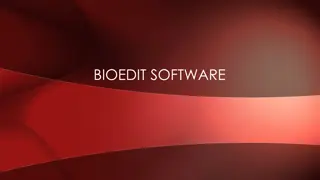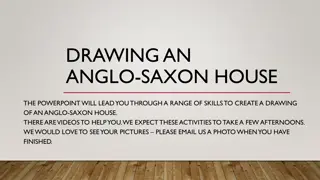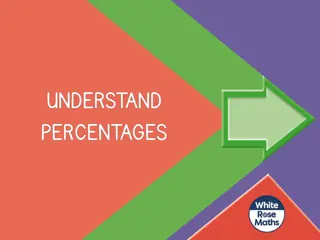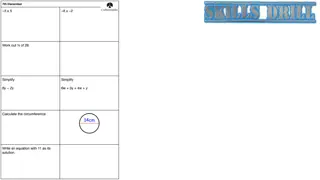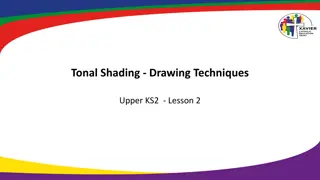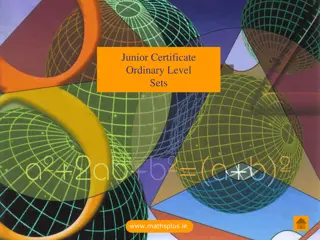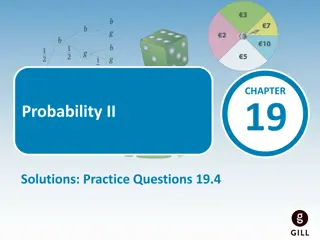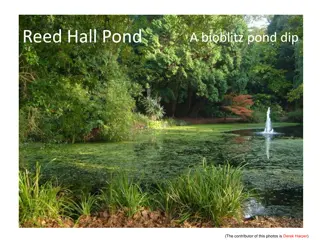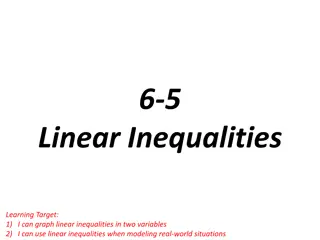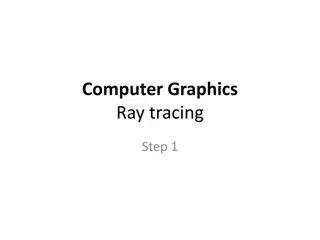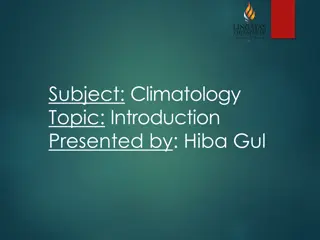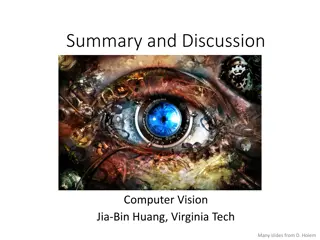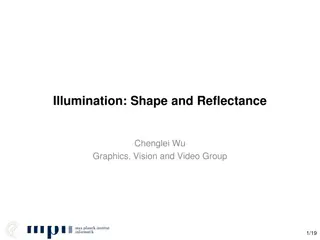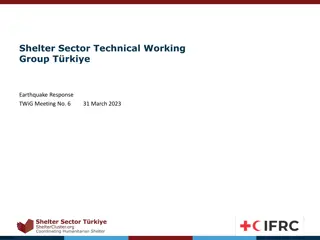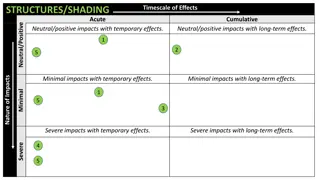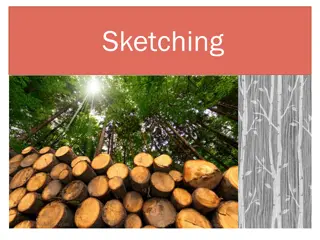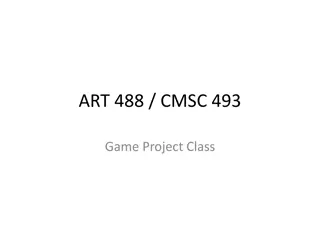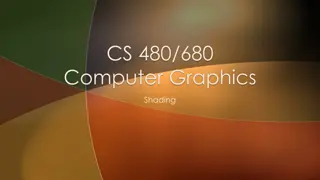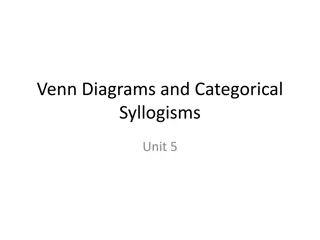Shading
In the realm of computer graphics, shading plays a crucial role in rendering realistic images. This content delves deep into various shading methods such as surface color computation, lighting effects, volume rendering, and more. It explores the intricate processes involved in rendering lifelike textures, light interactions, and image effects. The development history of shading techniques is also highlighted, shedding light on advancements from non-real-time to real-time rendering. Dive into the world of shading in computer graphics with this informative resource.
Download Presentation

Please find below an Image/Link to download the presentation.
The content on the website is provided AS IS for your information and personal use only. It may not be sold, licensed, or shared on other websites without obtaining consent from the author.If you encounter any issues during the download, it is possible that the publisher has removed the file from their server.
You are allowed to download the files provided on this website for personal or commercial use, subject to the condition that they are used lawfully. All files are the property of their respective owners.
The content on the website is provided AS IS for your information and personal use only. It may not be sold, licensed, or shared on other websites without obtaining consent from the author.
E N D
Presentation Transcript
Shading CMSC 435/634
RenderMan Displacement Surface Light Volume Imager
Displacement Given Position Normal Compute Position Normal Displacement Surface Light Volume Imager
Surface color Given Position Compute Color Opacity Displacement Surface Light Volume Imager
Lighting Given Surface Position Compute Light Direction Light Color Displacement Light Surface Volume Imager
Volume Effects Given Position Color Compute New Color Displacement Surface Light Volume Imager
Image Effects Given Pixel Color Compute Pixel Color Displacement Surface Light Volume Imager
Non-real time vs. Real-time RenderMan GPU Application Application Texture/ Buffer Displacement Vertex Surface Light Geometry Volume Imager Fragment Displayed Pixels Displayed Pixels
RenderMan vs. GPU RenderMan Developed from General CPU code Seconds to hours per frame 1000s of lines Unlimited computation, texture, memory, GPU Developed from fixed- function hardware Tens of frames per second 1000s of instructions Limited computation, texture, memory,
History (not real-time) Testbed [Whitted and Weimer 1981] Shade Trees [Cook 1984] Image Synthesizer [Perlin 1985] RenderMan [Hanrahan and Lawson 1990]
History (real-time) Custom HW [Olano and Lastra 1998] Multi-pass standard HW [Peercy, Olano, Airey and Ungar 2000] Register combiners [NVIDIA 2000] Vertex programs [Lindholm et al. 2001] Compiling to mixed HW [Proudfoot et al. 2001] Fragment programs Standardized languages Compute
Shading Methods Repeating Patterns mod, sin Divide and floor Shapes Implicit form: is this pixel inside Color tables Noise or computed patterns 12
Noise Characteristics Repeatable Locally continuous but distant points uncorrolated values RenderMan [0,1], average 0.5 Perlin s [-1,1], average 0 1/2 1 cycle per unit Versions for 1D-4D input
Noise Subtleties Many noise functions based on a lattice Piecewise function between integer coordinates Hash of integer coordinates control points Interpolating values easy but poor Even with higher-order interpolation Perlin s noise Passes through 0 at each integer Hash gives gradient
Perlin Noise in RenderMan Ci = float noise(floor(1/t)*P); 15
Fractional Brownian Motion (fBm) // Combine octaves, scaled by 1/f for(f=1; f<=floor(1/t); f*=2) Ci += (float noise(f*P)-.5)/f; Ci += .5; 16
Turbulence // fBm using abs(noise) for(f=1; f<=floor(1/t); f*=2) Ci += abs(float noise(f*P)-.5)/f; Ci += .5; 17
Advanced Shading Methods Perturbed patterns Adjust position, radius, etc. with noise Bombing Divide space into cells Compute random position in each cell Check if pixel is inside shape Blending Fade effects in and out with smoothstep
GLSL / HLSL Vertex, Geometry & Fragment/Pixel C-like, if/while/for Structs & arrays Float + small vector and matrix vec2, vec3, vec4, mat2, mat3, mat4 Swizzle & mask (a.xyz = b.xxw)
GLSL / HLSL Common math & shading functions Trigonometric, exponential, min, max, abs, length, distance, normalize, dot, cross mix(a, b, t) clamp(a, b, t) step(a, t), smoothstep(a, b, t) reflect, refract
Shader Debugging Render as color Map intermediate values to 0-1 Interpret results Hot reloading Make changes without changing viewpoint Conditional shading My favorite: vec4(-sign(x), sign(x), abs(x), 1) External debugging tools
Brick Demo mortar brick gap height width gap
Vertex Demo: Blend Positions
Vertex + Fragment Demo: Fresnel Environment Map
Noise Controlled, repeatable randomness Still spotty implementation Can use texture or compute
